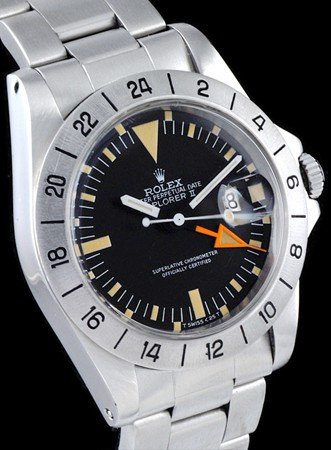 NARROW YOUR OPTIONS
NARROW YOUR OPTIONS
First off, choose a brand that’s still making watches. If you don’t, parts and servicing will be that much harder. Also, vintage watches with complex functions — a chronograph (stopwatch functions) or one that displays moon phases — can be costly to fix or restore. For those who don’t have the budget or patience for that, a watch that simply keeps time accurately and looks cool should suffice.
It sounds like a no-brainer, but make sure you’re able to read the time on the damn thing. And as far as size goes, a good range is between 38mm and 44mm wide. Anything smaller, like a 34mm, may have been in vogue 60 years ago, but today could make it look like you borrowed Granny’s watch. If you fear the funky face and odd shape might lose their novelty one day, they will. So goes with a classic design.
You’ll need to choose between a quartz (basically, it means it has a battery) or mechanical watch; quartz watches aren’t as highly valued as mechanical ones, which we recommend because it’s way cooler to have an old watch that doesn’t need a battery. Mechanical watches in turn are either automatic (it runs on the energy created by your movement) or manual wind.



